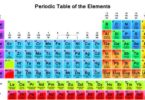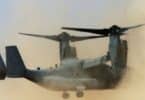Frictional forces are considered to act in a direction
(a) perpendicular to surfaces in contact
(b) parallel to surface in contact
(c) parallel to normal reaction
(d) inclined 45° to normal reaction
A body of mass 100 g is made just to slide on a rough surface by applying a force of 0.8 N. Then the coefficient of friction is (Take g = 10 ms–2)
(a) 0.8
(b) 0.08
(c) 0.7
(d) 0.6 6
A body just begins to slide over a rough surface when pulled with a force of 20N. If it is pulled with a force of 15N, what is the force of friction between the surfaces?
(a) zero
(b) 15N
(c) 20N
Related: area of a parallelogram worksheet
A body of mass 1.2 × 103 kg is moving at a velocity of 10ms–1 at a level of coefficient of kinetic friction 0.2. The body is suddenly stopped. How far does the body move before it comes to rest? (g = 10ms–2)
(a) 30m
(b) 40m
(c) 25m
(d) 50m
A horizontal force is applied to a block sitting on a rough table. When the force is 6N, the acceleration is 1ms–2 and when the force is 10N, the acceleration is 3ms–2. The mass of the block is ______.
(a) 1kg
(b) 2kg
(c) 3kg
(d) 4kg
A block is kept on a smooth inclined plane with an angle of inclination 30° that moves with a constant acceleration so that the block does not slide relative to the inclined plane. Let F1 be the contact force between the block and the plane. Now the inclined plane stops and let F2 be the contact force between the two in this case. Then F1/F2 is ____.
(a) 1
(b) 4/3
(c) 2
(d) 3/2
A cylinder rolls up an inclined plane, reaches some height and then rolls down (without slipping throughout these motions). The directions of frictional force acting on the cylinder are
(a) up the incline while ascending and down the incline while descending
(b) up the incline while ascending as well as descending
(c) down the incline while ascending and up the incline while descending
(d) down the incline while ascending as well as descending.
Related: chemistry bonding questions
Force of limiting friction between a body and a surface
(a) increases if the surface is inclined
(b) decreases if the surface is inclined
(c) remains the same whether the surface is inclined or horizontal
A force of 98 newtons is required to pull a body of mass 1 × 102kg over the surface of the ice, then the co-efficiency of friction is (g = 9.8ms–2)
(a) 0.2
(b) 0.3
(c) 0.1
(d) 0.5
If the angle of repose is 45 degrees, the coefficient of friction is _____.
(a) less than 1
(b) more than 1
(c) equal to 1
(d) data insufficient
A 20kg block is initially at rest. A 75N force is required to set the block in motion. After the motion, a force of 60N is applied to keep the block moving at constant speed. The coefficient of static friction is ___.
(a) 0.6
(b) 0.52
(c) 0.44
(d) 0.35
Related: Quiz on cube root (mathematics)
If the coefficient of friction between the road and the tires is 0.2. Find the shortest distance at which a car is stopped if it was traveling at a velocity of 72kmph (g = 9.8m/s2)
(a) 100m
(b) 101m
(c) 102m
(d) 110m
The block A kept on an inclined surface just begins to slide if the inclination is 30°. The block is replaced by another block B and it is found that it begins to slide if the inclination is 40°. The mass of A is _____.
(a) greater than mass of B
(b) less than the mass of B
(c) equal to the mass of B
(d) all of these are possible
A block slides down a smooth inclined plane to the ground when released at the top, in time t seconds. Another block is dropped vertically from the same point, in the absence of the inclined plane, and reaches the ground in t/2 seconds. Then the angle of inclination of the plane with the vertical is ____.
(a) 60°
(b) 75°
(c) 45°
(d) 30°
A wooden block is at rest on an inclined plane. When the angle if inclination is gradually increased to 45 degrees, the block just begins to slide down. Find the coefficient of friction between the wooden surface and inclined plane
(a) 1.5
(b) 1.0
(c) 0.5
(d) 0.25
Related: reasoning dice questions
Frictional force between two bodies depends upon which of the following ?
(a) materials in contact
(b) conditions of the sliding surfaces
(c) the force with which the two bodies are pressed
(d) all the above
A 20kg block is in motion on a rough horizontal surface. A horizontal force of 60N is required to keep the body moving at a constant speed. The co-efficient of kinetic friction is _______. (g = 10 ms–2)
(a) 0.3
(b) 0.4
(c) 0.2
(d) 0.5
A body of mass 60kg is dragged with just enough force to start moving on a rough surface with a coefficient of static and kinetic friction of 0.5 and 0.4 respectively. On applying the same force, what is the acceleration:
(a) 0.98 m/s2
(b) 9.8 m/s2
(c) 0.54 m/s2
(d) 5.292 m/s2
Related: questions on equilibrium chemistry
A block is released from the rest at the top of a frictionless inclined plane 16m long. It reaches the bottom 4s later. A second block is projected up the plane from the bottom at the instant the first block is released in such a way that it returns to the bottom simultaneously with the first block. The acceleration of each block on the incline is ___.
(a) 1m/s2
(b) 2m/s2
(c) 4m/s2
(d) 9.8m/s2
Frictional force exists in which of the following cases ___
(a) exists only for moving bodies
(b) exists only for bodies which are at rest
(c) exists for both moving and non-moving bodies
A book is lying on the table. What is the angle between the action of the book on the table and the reaction of the table on the book ?
(a) 0°
(b) 30°
(c) 90°
(d) 180°
Related: question of fraction
A block is projected along a rough horizontal road with a speed of 10m/s. If the coefficient of kinetic friction is 0.10, how far will it travel before coming to rest ?
(a) 150 m
(b) 100 m
(c) 25 m
(d) 50 m
A block of mass 2.5kg is kept on a rough horizontal surface. It is found that the block does not slide if a horizontal force less than 15N is applied to it. Also, it is found that it takes 5s to slide through the first 10m if a horizontal force of 15N is applied and the block is gently pushed to start the motion. Taking g = 10m/s2, calculate the coefficient of static and kinetic friction between the block and the surface.
(a) 0.60,0.52
(b) 0.25,0.60
(c) 0.60,0.15
(d) 0.15,0.52
A block of mass 10kg is sliding on a surface inclined at an angle of 30° with the horizontal. Calculate the acceleration of the block. The coefficient of kinetic friction between the block and the surface is 0.5
(a) 0.657ms–2
(b) 1ms–2
(c) 0.2ms–2
(d) 0.5ms–2
Related: fluid mechanics questions
What minimum force is required to move a body of mass 5 kg over a surface whose coefficient of friction is 0.3 ? g = 10 ms–2.
(a) 15 N
(b) 13 N
(c) 12 N
(d) 10 N
A body slipping on a rough horizontal plane moves with a deceleration of 4.0m/s2. What is the coefficient of kinetic friction between the block and the plane ?
(a) 0.4
(b) 0.2
(c) 0.3
(d) 0.1
A body slides down a smooth inclined plane of base ‘x’ metres. The angle of the plane so that the time taken by the body to reach the bottom of the plane will be minimal is ____.
(a) 30°
(b) 60°
(c) 45°
(d) 75°
Related: endocrine system quiz
When a horse pulls a wagon, the force that causes the horse to move forward is the force:
(a) he exerts on the wagon
(b) the wagon exerts on him
(c) he exerts on the ground
(d) the ground exerts on him
A body of mass 50kg is lying on a horizontal surface of co-efficient of static friction 0.5. Find the force required to start the motion. When the body is moving with a net force of static and kinetic friction, calculate the acceleration of the body. When the co-efficient of kinetic friction 0.48 (g = 9.8ms–2)
(a) 245N,0.169ms–2
(b) 245N,0.245ms–2
(c) 245N,0.135ms–2
(d) 245N,0.196ms–2
To avoid slipping while walking on ice, one should take smaller steps because of the
(a) friction of ice is large
(b) larger normal reaction
(c) friction of ice is small
(d) smaller normal reaction
A horizontal force, just sufficient to move a body of 4kg mass lying on a rough horizontal surface, is applied on it. The coefficient of static and kinetic friction between the body and the surface are 0.8 and 0.6, respectively. If the force continues to act even after the block has started moving, the acceleration of the block in m/s2 is (g = 10 m/s2)
(a) ¼
(b) ½
(c) 2
(d) 4
Related: chemistry hard questions
A block of mass 1kg is placed on the horizontal surface of a truck ( = 0.6) and the truck is moving at an acceleration of 5m/s2. The frictional force on the block will be (Take g = 10m/s2)
(a) 5N
(b) 6N
(c) 4N
(d) 8N






